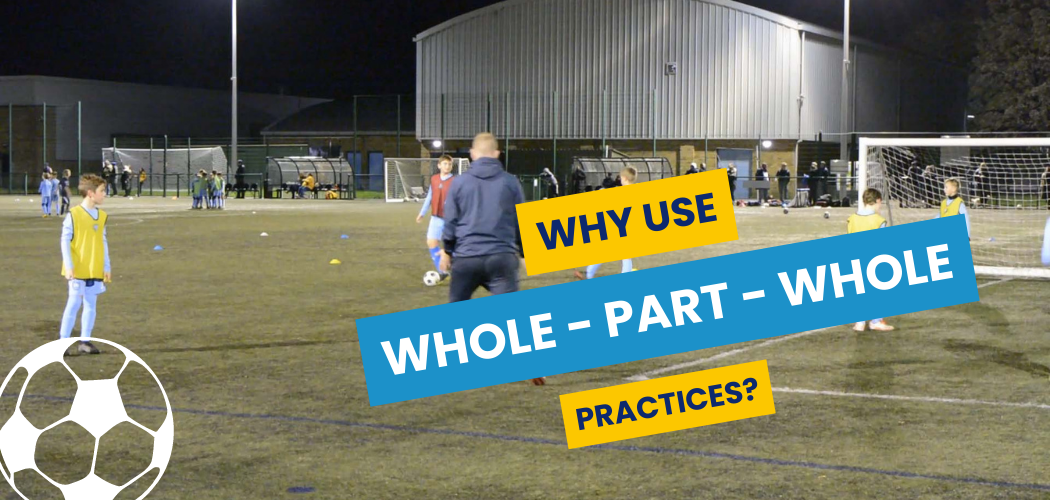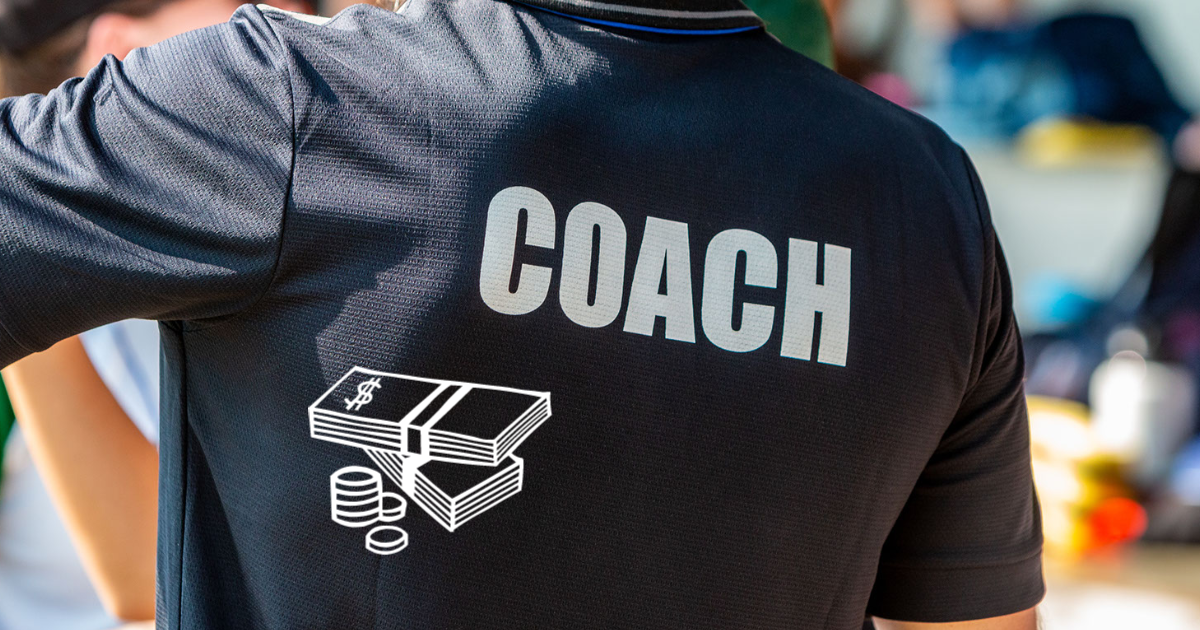Watch the video or read read the blog below.
I am a big fan of using whole-part-whole practices with all age groups and I recently delivered one of these practices when tutoring on the UEFA C licence to show one example of how it can be used.
The way I explain a whole-part-whole practice is that you start with what you want to achieve in a game (this is the whole), this may be playing better through midfield, or it may be a technical outcome such as driven passes. This is the “whole” and your practice starts with a structure that allows your session topic to come out.
You then break this down into an isolated part of this practice and work on this in detail. So, in terms of playing through midfield, this might be turning in midfield when you are under pressure, or it may be movement in midfield to create space to play forward. If you are working on a technical aspect you may break this down into part of the technical aspect, such as just getting the approach to the ball correct to allow you to drive the pass.
You then move back into the whole, in the hope that the isolated work you have done in the part, will start to improve how the players perform in the whole.
Here is an example of a whole-part-whole session on playing through the midfield.
For me, there are several advantages of coaching this way.
IT CAN ALLOW YOU TO START WITH A SMALL-SIDED GAME WHICH INCREASES ENGAGEMENT
“When are we having a match?”. This is probably one of the most asked questions in football training sessions. A small-sided game is a great way to start a whole-part-whole practice. You can get them straight into a match on arrival, as players arrive they can start 2v2, 3v2, 3v3, etc as players turn up until everyone is there. You will engage players as soon as they turn up and get them playing game-related practices straight away.
IT ALLOWS YOU TO CHECK PLAYERS LEARNING
As coaches it can sometimes be difficult to check the players have learned what you have been teaching them and if the messages have been ingrained into them. By doing the whole practice first it gives you a chance to gauge their understanding of the topic or challenge you have set them. You then break this down in the part to give detail that will allow them to be more successful in the game. Then when you go back into the whole you can see if they have improved their performance or understanding from the first whole practice they participated in.
SETTING UP THE PRACTICE CAN BE EASIER
Depending on what practice you are running, you can usually transition straight into a part practice within the area you set up for the whole practice, this can make setting up and transitioning between parts of your sessions a lot easier. You can see an example of this in the below whole-part-whole session on rotation in midfield.
PLAYERS CAN RELATE IT TO THE GAME OR SKILL
From a learning perspective, the players need to see how the practices you put on during training sessions relate to the game. This way they can take the message from the training sessions into the matchdays to hopefully make them more effective. By breaking down a skill or practice, the players will then see how this part relates to the whole game, this will hopefully then have the knock-on effect for matchdays at the weekend.
Want more sessions and advice? join the TSC Coaches Club for FREE by clicking this link.



